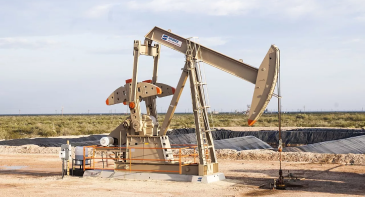The demand for oil and gas across the globe has been increasing over the last few decades. This is driven by lots of factors – including the rise of global economic activities.
That’s why oilfield service companies have responded to this demand through more efficient extraction of hydrocarbons around the world. This is where oil and gas services enter the scene.
What are oil and gas services companies?
Oilfield service providers are considered to be the supportive network for oilfield suppliers and producers. They offer solutions such as maintenance, completion, production, supply, and onshore and offshore logistical support for oil wells. In other words, they are involved in the maintenance, repair, and manufacturing of all the equipment used in the extraction and transportation of oil.
How the oilfield services industry works
Investors who want to build oilfield service companies can quickly get overwhelmed by the unique metrics and complex jargon used throughout the industry. This article will help you understand the fundamentals of companies engaged in the oil and gas sector, as well as its key concepts and standards of measurement.
This industry is broken down into three parts: upstream, midstream, and downstream.
- Upstream
Upstream companies are involved in oil exploration and production. These are the businesses that search the world for reservoirs, and then drill in a particular location to extract raw materials. They are often known as exploration and production (E&P) companies.
The upstream part of the oilfield services industry is technologically intensive and is characterized by high investment capital, high risks, and extended duration due to it being time-consuming to locate and drill the raw materials.
- Midstream
As mentioned earlier, the midstream segment consists of transportation companies. They are responsible for transferring the extracted materials to refineries to process the oil and gas.
Midstream businesses are characterized by pipelines, trucking, storing, and shipping of raw materials. They are also marked by low capital risk and high regulation, particularly in pipeline transmission. Midstream is also dependent on the upstream companies’ success.
- Downstream
The downstream segment of the oilfield services industry consists of refineries. They are responsible for converting the oil and gas to products, such as jet fuel, asphalt, heating oil, and gasoline.
What do oil and gas field services companies do?
Oilfield service companies do a lot of work. They provide a wide range of solutions in support of oil and gas exploration and production activities.
For instance, they design pipelines, construct rigs, perform construction and technical works, and provide engineering services. Some of them also provide catering or hospitality services, logistics, transport, security, and more.
Who is the biggest oil and gas services company?
The world’s biggest oilfield services company is Schlumberger. As recorded in its 2020 full-year results, Schlumberger has earned $23.6 billion in revenues.
It has more than 85 operating facilities around the world, including in Europe, the Middle East, and North America.
The richest and most profitable oilfield services company, on the other hand, is Saudi Aramco. It generated $49 billion in net income in 2020.
Conclusion
The oilfield service sector is a multi-billion dollar industry. And, it will continue to grow as the world’s dependence on oil and gas increases.

